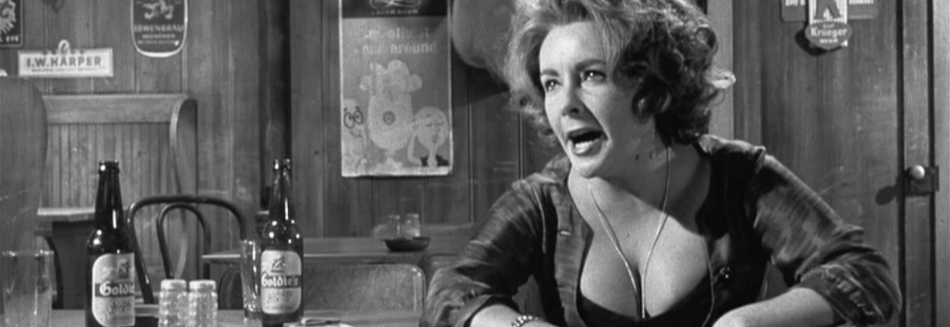The Graduate’s Information to Rewatching: Unearthing New Depths in Mike Nichols’ Masterpiece
Associated Articles: The Graduate’s Information to Rewatching: Unearthing New Depths in Mike Nichols’ Masterpiece
Introduction
On this auspicious event, we’re delighted to delve into the intriguing matter associated to The Graduate’s Information to Rewatching: Unearthing New Depths in Mike Nichols’ Masterpiece. Let’s weave fascinating data and supply recent views to the readers.
Desk of Content material
The Graduate’s Information to Rewatching: Unearthing New Depths in Mike Nichols’ Masterpiece

Mike Nichols’ The Graduate (1967) is not only a movie; it is a cultural touchstone. Its iconic imagery – the pool, the commencement ceremony, the bus – has permeated common consciousness, changing into shorthand for a selected sort of disillusionment and craving. However past the immediately recognizable scenes and Dustin Hoffman’s unforgettable efficiency, lies a movie wealthy with nuance and ambiguity, ripe for repeated viewings. This text serves as a graduate-level information, providing a number of views and analytical lenses to deepen your appreciation of this cinematic masterpiece.
Past the Floor: Themes and Interpretations
On its easiest stage, The Graduate tells the story of Benjamin Braddock, a latest faculty graduate adrift within the purposelessness of post-war American affluence. His affair with Mrs. Robinson, an older, married girl, and his subsequent relationship with Elaine, her daughter, signify his wrestle to navigate maturity, societal expectations, and the complexities of affection and need. However a deeper dive reveals layers of thematic richness:
-
The Phantasm of the American Dream: The movie critiques the hole promise of the American Dream, portraying a society obsessive about materials success however missing real achievement. Benjamin’s mother and father, with their relentless deal with profession and social standing, embody this vacancy. Their strain on Benjamin to evolve highlights the stifling nature of societal expectations. Rewatching the movie, pay shut consideration to the delicate methods during which the characters’ possessions and social standing fail to deliver them happiness.
-
The Seek for Identification: Benjamin’s journey is a quest for self-discovery. He is a passive character initially, swept alongside by the currents of his relationships. Nonetheless, his eventual rebel in opposition to the established order signifies a rising consciousness of his personal wishes and a rejection of predetermined paths. Repeated viewings help you hint the delicate shifts in Benjamin’s persona, from his preliminary naiveté to his eventual assertive actions. Deal with his physique language, his facial expressions, and the alternatives he makes – each massive and small – to know this evolution.
-
The Energy Dynamics of Relationships: The relationships in The Graduate are fraught with energy imbalances. Mrs. Robinson’s manipulation of Benjamin, her exploitation of his vulnerability, and the following energy wrestle between Benjamin and Elaine all discover the complexities of need and management. Look at these energy dynamics via the lens of gender, class, and age. How does the movie problem standard notions of relationships? How does the visible language – digital camera angles, framing – reinforce or subvert these energy buildings?
-
The Function of Music: Simon & Garfunkel’s haunting soundtrack is integral to the movie’s environment and emotional influence. The songs aren’t merely background music; they underscore the characters’ emotional states and advance the narrative. Pay shut consideration to the lyrics and the way they hook up with the scenes they accompany. Think about how the music contributes to the movie’s general tone of alienation and longing. A rewatch with a spotlight solely on the soundtrack can reveal stunning depth and connections you’ll have missed earlier than.
A Graduate-Degree Evaluation: Technical Points and Cinematic Methods
The Graduate just isn’t solely a compelling story but additionally a masterclass in filmmaking. Analyzing the technical elements enhances your appreciation of Nichols’ directorial ability:
-
Mise-en-scène: The movie’s visible fashion is essential to its storytelling. Discover the cautious use of framing, composition, and setting. The recurring motif of the swimming pool, for example, symbolizes each freedom and entrapment. Analyze using colour, lighting, and costume design to know how they contribute to the movie’s temper and thematic considerations.
-
Cinematography: The camerawork is fluid and dynamic, usually using monitoring pictures and close-ups to seize the characters’ emotional states. Take note of the digital camera angles and actions. How do they affect your notion of the characters and their relationships? Using shallow depth of discipline, for instance, usually isolates Benjamin, emphasizing his feeling of isolation amidst the opulent settings.
-
Modifying: The movie’s modifying is seamless, making a clean and fascinating narrative circulate. Nonetheless, upon nearer examination, you’ll be able to respect the delicate use of leap cuts and montage sequences to convey the passage of time and the characters’ emotional transitions. Determine key modifying decisions and analyze their influence on the narrative and emotional influence.
-
Sound Design: Past the long-lasting soundtrack, the sound design performs an important position in creating the movie’s environment. Take note of using diegetic and non-diegetic sound to reinforce the temper and emotional influence of particular scenes. Using silence, for example, will be simply as highly effective because the music or dialogue.
A number of Rewatch Methods for Enhanced Understanding:
To really respect The Graduate on a deeper stage, think about these rewatch methods:
-
Thematic Rewatch: Deal with a single theme – the American Dream, id, relationships – and analyze how the movie explores it via varied elements, comparable to dialogue, visible parts, and music.
-
Character Examine Rewatch: Select a personality (Benjamin, Mrs. Robinson, Elaine, or perhaps a minor character) and analyze their motivations, actions, and relationships. How do they evolve all through the movie?
-
Technical Rewatch: Deal with the technical elements of filmmaking – cinematography, modifying, sound design, mise-en-scène – and analyze how they contribute to the movie’s general influence.
-
Comparative Rewatch: Evaluate The Graduate to different movies coping with related themes, comparable to alienation, coming-of-age, or societal pressures. This comparative evaluation can reveal new insights into the movie’s distinctive qualities and contributions to the cinematic panorama.
-
Contextual Rewatch: Analysis the historic and cultural context of the movie’s manufacturing. Understanding the social and political local weather of the late Nineteen Sixties can deepen your understanding of the movie’s themes and significance.
Conclusion:
The Graduate is a movie that rewards repeated viewings. By approaching it with a important and analytical eye, partaking with its thematic depth, and appreciating its masterful technical execution, you’ll be able to unlock new layers of that means and deepen your understanding of this enduring cinematic masterpiece. This is not nearly watching a movie; it is about partaking in a dialog with a murals that continues to resonate with audiences many years after its launch. So, seize your copy, settle in, and put together for a graduate-level expertise with Mike Nichols’ timeless traditional.







Closure
Thus, we hope this text has supplied worthwhile insights into The Graduate’s Information to Rewatching: Unearthing New Depths in Mike Nichols’ Masterpiece. We thanks for taking the time to learn this text. See you in our subsequent article!
